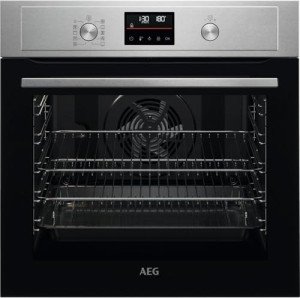A Trip Back In Time A Conversation With People About Self Cleaning Oven Costs 20 Years Ago
Understanding Self-Cleaning Oven Costs: A Comprehensive Guide
In the world of contemporary cooking appliances, self-cleaning ovens stand out as an innovative development, combining benefit with efficiency. Gone are the days of laboriously scrubbing the oven after a greasy meal. Nevertheless, essential candidates in purchasing or utilizing such appliances may discover themselves pondering the associated costs. This post explores different dimensions of self-cleaning oven costs, providing an extensive understanding for consumers.
What Is a Self-Cleaning Oven?
A self-cleaning oven automates the process of cleaning the oven's interior utilizing exceptionally heats (normally around 800 ° F or 427 ° C). This process incinerates food residue and spills into fine ash, making it simpler to clean away. Normally, self-cleaning options been available in two primary formats: pyrolytic and steam cleaning. Pyrolytic ovens produce high heat, while steam cleaning ovens utilize steam to soften the grime.
The Costs Associated with Self-Cleaning Ovens
Comprehending the costs of self-cleaning ovens involves examining numerous elements including purchase cost, operational costs, and possible repair and maintenance costs. Below is a comprehensive breakdown of these aspects.
1. Initial Purchase Cost
The preliminary cost of a self-cleaning oven can differ extensively based upon brand, design, and features.
Kind of Oven
Price Range
Basic Model
₤ 600 – ₤ 800
Mid-Range Model
₤ 800 – ₤ 1,200
High-End Model
₤ 1,200 – ₤ 2,500+
2. Functional Costs
Functional costs include energies and any additional cleaning products. While Suggested Internet site -cleaning ovens lower the need for harsh chemicals, electricity intake throughout cleaning should be thought about.
- Electricity Costs: Running a self-cleaning cycle can take in about 2-3 kWh of electrical power. Depending upon regional rates, this might add around ₤ 0.30 to ₤ 1.00 to the regular monthly bill.
- Cleaning Supplies: While self-cleaning ovens lessen the need for cleaners, some users may select surface area cleaners for maintaining the exterior or touch-ups.
3. Repair And Maintenance Costs
Though self-cleaning ovens are typically low-maintenance, they might need occasional repair work.
- Regular Maintenance: This may consist of inspecting seals, replacing light bulbs, or cleaning the door.
- Unanticipated Repairs: Some typical repairs can cost between ₤ 100-₤ 500 depending upon the concern.
4. Long-Term Value Consideration
Purchasing a self-cleaning oven can lead to long-term cost savings:
- Less Time Spent Cleaning: The time conserved throughout cleaning translates to value, particularly for hectic homes.
- Keep Efficiency: A clean oven operates more effectively, potentially minimizing energy costs gradually.
Frequently Asked Questions Regarding Self-Cleaning Ovens
Q1: Are self-cleaning ovens safe to utilize?
Yes, self-cleaning ovens are typically safe when utilized according to manufacturer directions. The high temperatures included can produce smoke or smells, so proper ventilation is recommended.
Q2: How frequently should I use the self-cleaning feature?
Usage can vary based on how frequently the oven is used and the types of foods prepared. Numerous users discover that a self-cleaning cycle every 3 to 6 months is appropriate.
Q3: Can you use the oven while it's in self-cleaning mode?
No, it is unsafe to utilize the oven while it is undergoing the self-cleaning process. Guarantee all cooking is done before starting a cleaning cycle.
Q4: What takes place to the oven if there is a lot of accumulation?
In cases of excessive buildup, it is recommended to wipe away big pieces of debris before initiating a self-cleaning cycle. Continuous disregard might lead to a greater threat of fire.
Pros and Cons of Self-Cleaning Ovens
Advantages
- Convenience: Automates the cleaning process, saving time and effort.
- Less Harsh Chemicals: Minimizes the need for volatile cleaners.
- Thorough Cleaning: High temperatures damage most residues, ensuring tidiness.
Disadvantages
- Greater Initial Costs: The purchase rate is typically greater than basic ovens.
- Energy Consumption: Self-cleaning cycles use considerable amounts of electrical power.
- Potential Wear and Tear: Frequent use might reduce the lifespan of some elements.
Self-cleaning ovens represent a substantial advancement in kitchen benefit, despite their associated costs. When considering buying a self-cleaning oven, it's vital to take into consideration not simply the preliminary purchase price, however also continuous functional costs, maintenance requirements, and long-lasting benefits. By weighing these elements, consumers can make informed choices that line up with their cooking habits and budget plan restraints. The convenience paid for by self-cleaning technology continues to make it a beneficial choice for busy kitchen areas, proving that often, a little investment in time and resources settles in a substantial leap in comfort and ease.
- * *
When it pertains to contemporary kitchen home appliances, self-cleaning ovens offer not just a service to an once problematic task but likewise improve general cooking experiences. The sensible potential purchaser ought to examine total costs and benefits before buying choice, ensuring their investment lines up with their cooking requirements.
